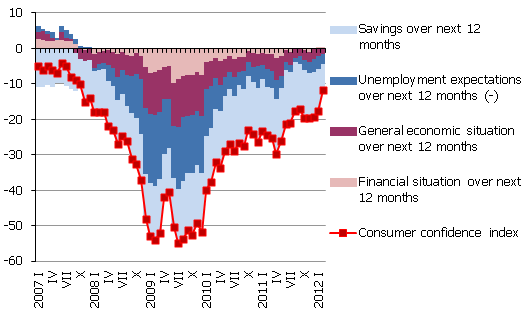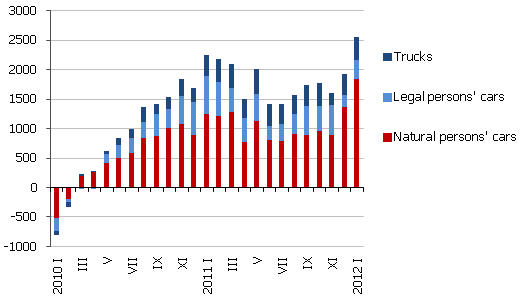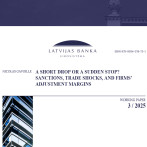Year begins with substantial pluses in retail
The faster rise in sales volumes expected by analysts in December data has doubled in January. The retail turnover in January (seasonally adjusted data at constant prices) rose 6.4% month-on-month – a very impressive rise for one month. Year-on-year, sales volumes have grown by 16.6%, which implies a high annual growth, too. It must be mentioned, however, that the data aggregated by the Central Statistical Bureau are provisional, for the sample of enterprises is formed every year anew and usually revised and adjusted within a couple of months, which finds reflection adjusted data as well.
The month-on-month rise in retail turnover was determined by the demand for non-food goods (9.6% rise), with the sales volumes of food items remaining unchanged. The rapid rise in non-food goods might have been provoked by several factors: smaller heating bills because of the warm weather conditions in October-December, withdrawals of cash as a result of developments in the banking sectors, the postponed consumption as the consumer confidence improved and others. We are not likely to see such leaps in trade in the future, however, for the new heating bills will leave no room for optimism or disposable finances.
Another factor which may have impacted purchases but on which other operational data are still missing is changes in wages. In the public sector, there is a lack of workers and a search is on to find ways to motivate people: through raising salaries, providing health insurance etc. In some branches, entrepreneurs indicated even earlier that in their struggle to fill vacancies and keep their employees they will raise salaries. The promised raises may have already had an effect on consumption in January as may have done Christmas bonuses. Be it as it may, it is difficult to come up with another explanation for the impressive improvement in the consumer confidence indicator published by the EC yesterday: the indicator improved by almost 6 percentage points placing it practically on the level of the so-called "fat years". Moreover, there is a notable improvement in the traditionally most negatively evaluated question, i.e. about chances of saving in the next 12 months.
Consumer confidence index and its characteristic indicators (response balance; percentage points)

Automobile sales, accounted for apart from retail trade, dropped 6.5% month-on-month in January, whereas year-on-year, a substantial rise was retained (20.5%). The sales volumes are impacted by purchases not only by natural but also by legal persons. While in the breakdown by natural and legal persons, information is limited regarding furniture and construction materials purchases, purchases of automotive vehicles can be analyzed by way of vehicle registration data with the Road Traffic Safety Department (RTSD). We must admit that better results had been predicted for the number of automobiles registered in January. It is this item where we may expect adjustments in sales volumes or we may see a rise in February. The number of automobiles registered in January has grown substantially: the most important rise has been observed in the cars registered as property of natural persons, yet there has also been an increase in the number of cars and trucks registered as property of legal persons. Since the prices of trucks much exceed the average price of cars, the impact of trucks on sales volumes is more substantial than can be gleaned from the statistics regarding the number of transport vehicles.
Annual changes in transport vehicles registered with RTSD for the first time, per unit, SA data.

Textual error
«… …»






